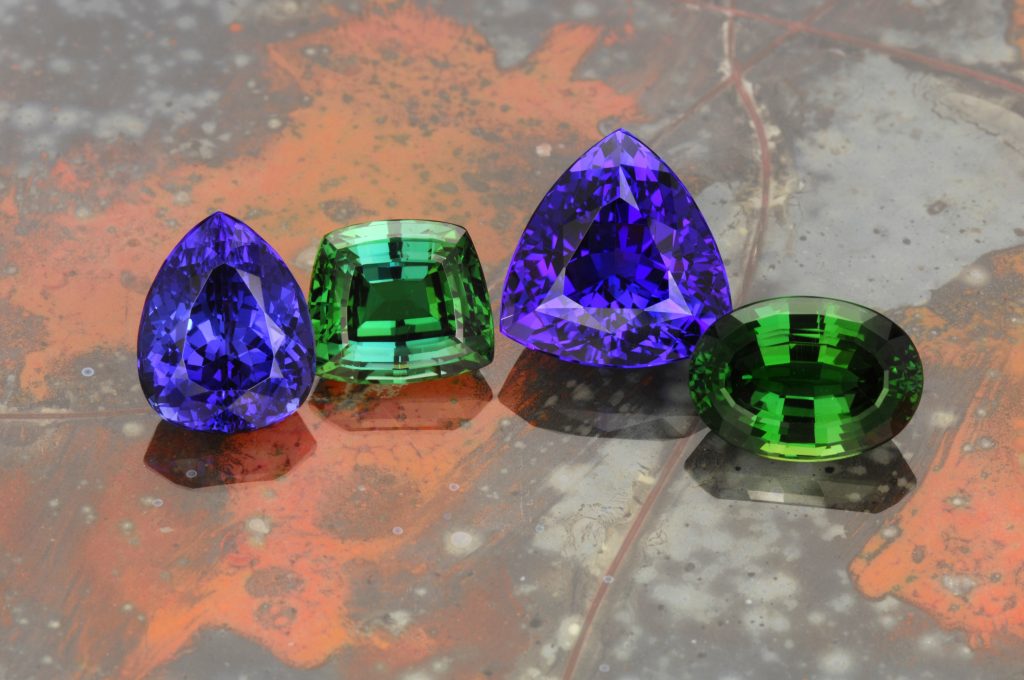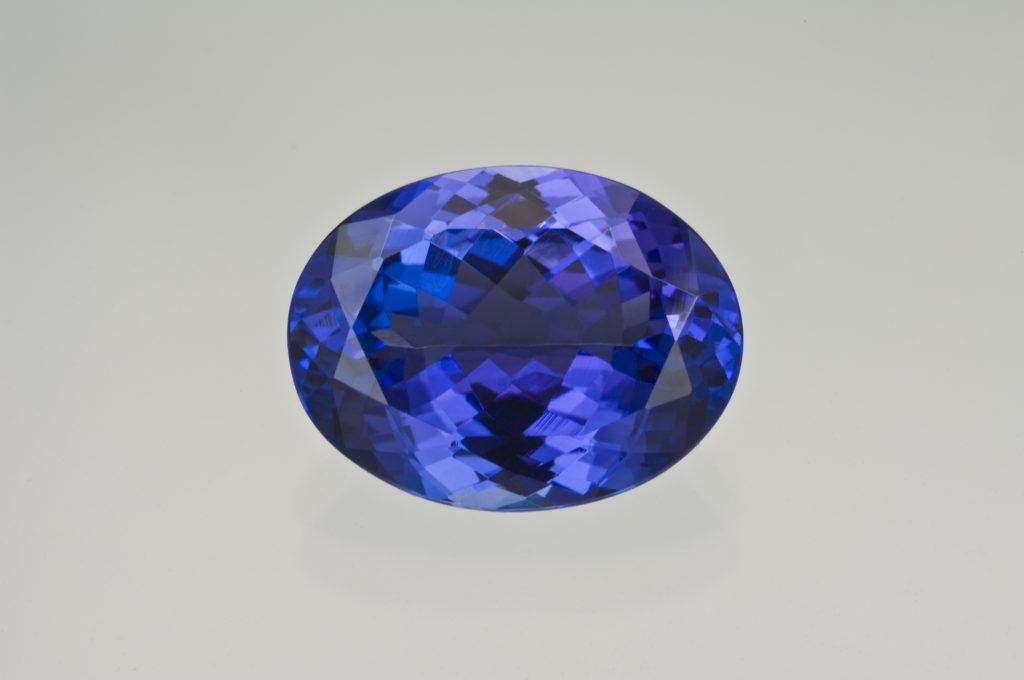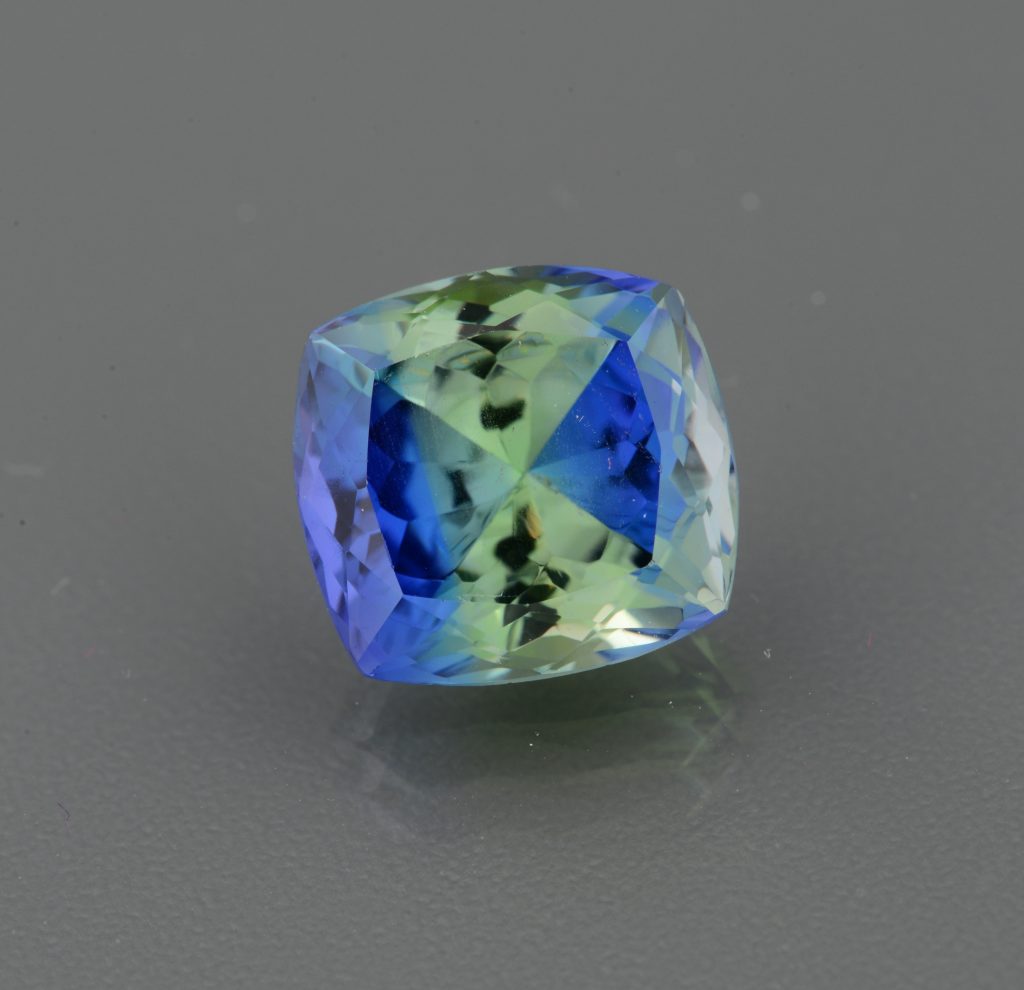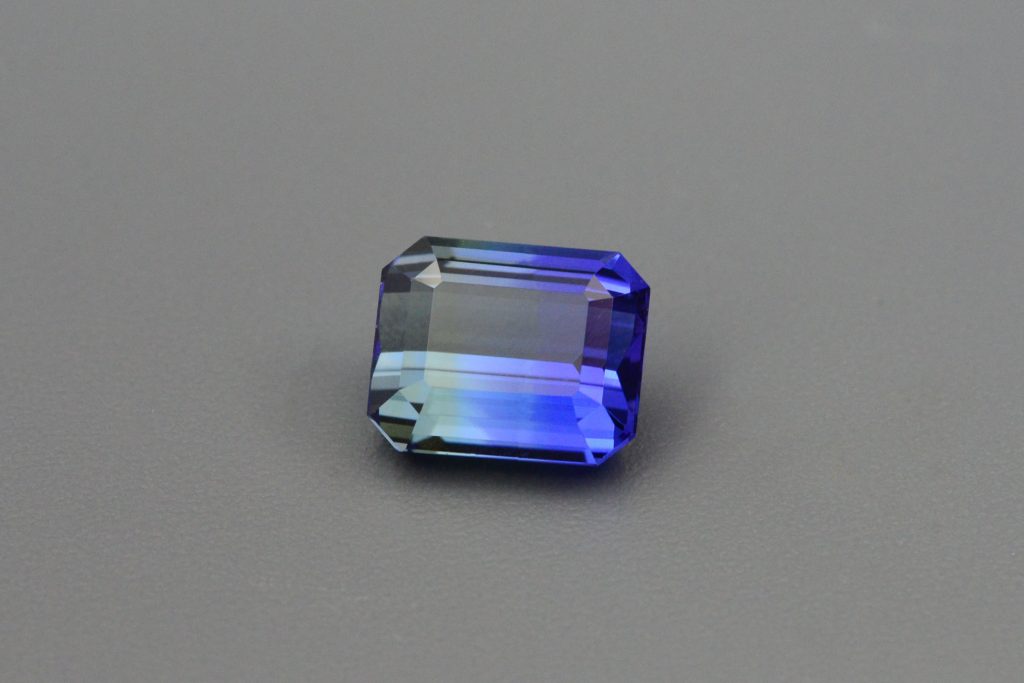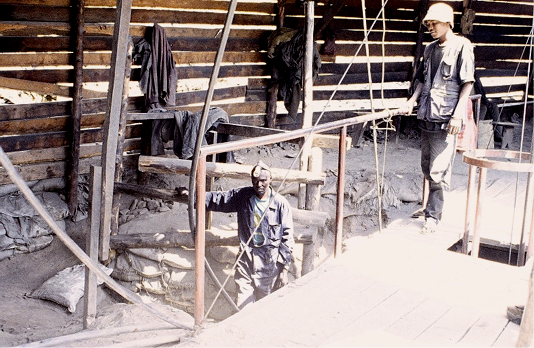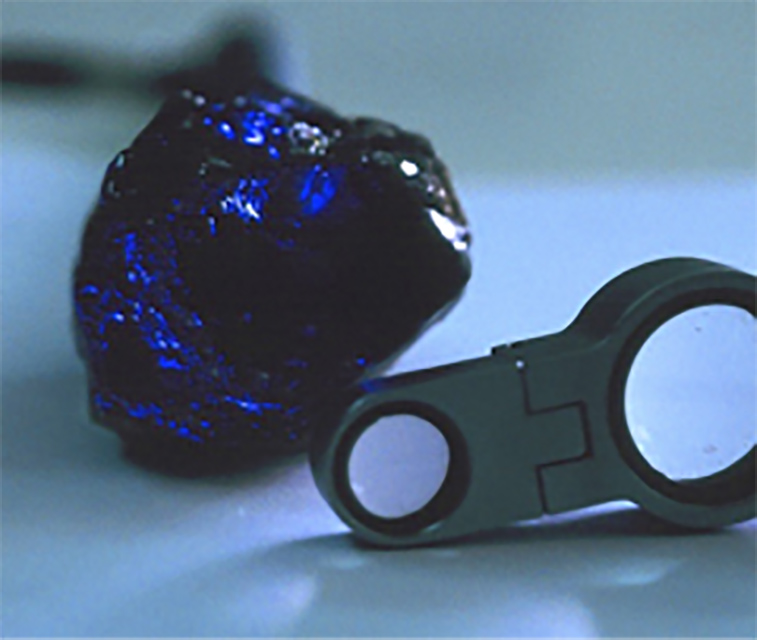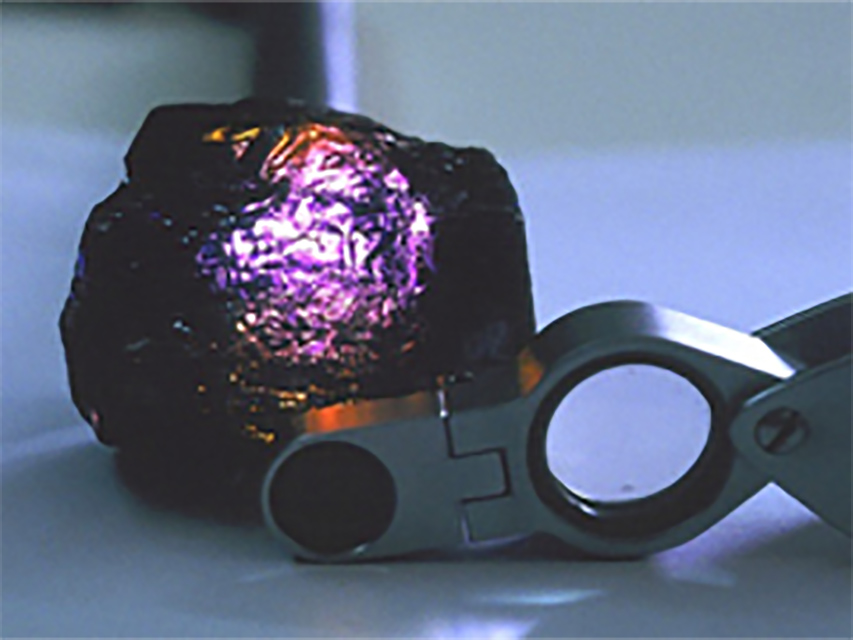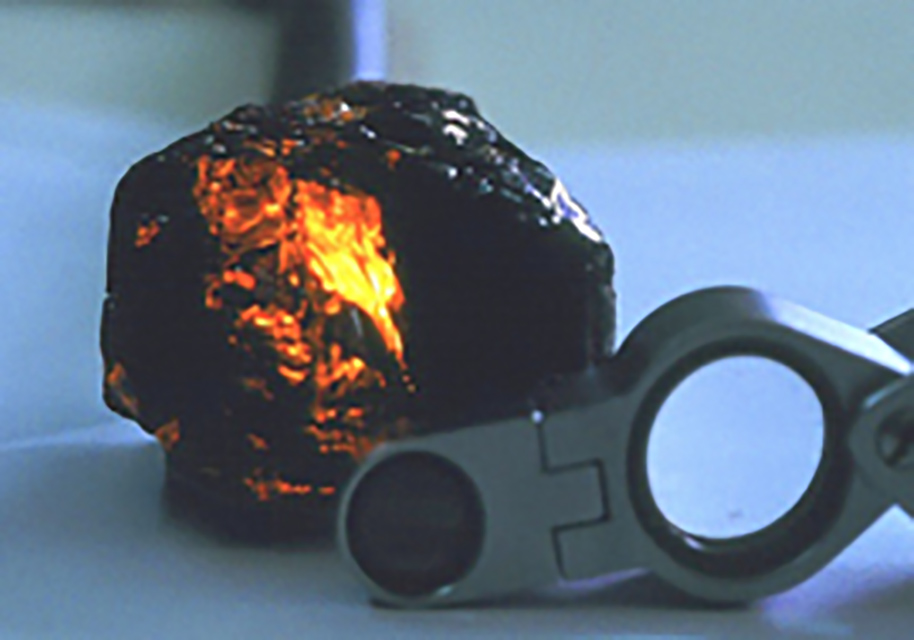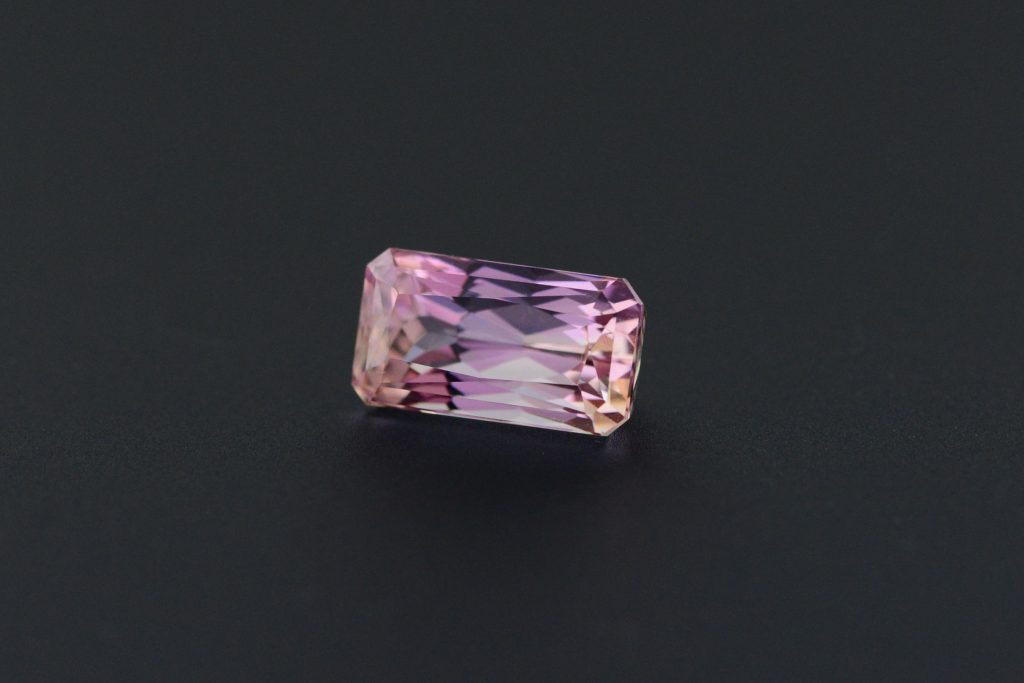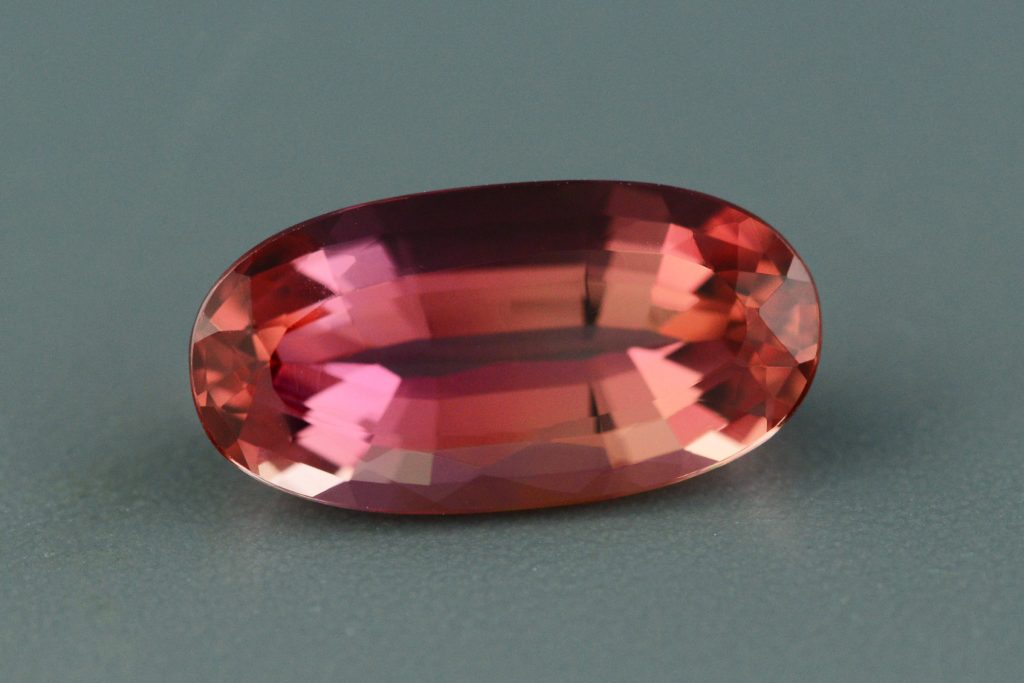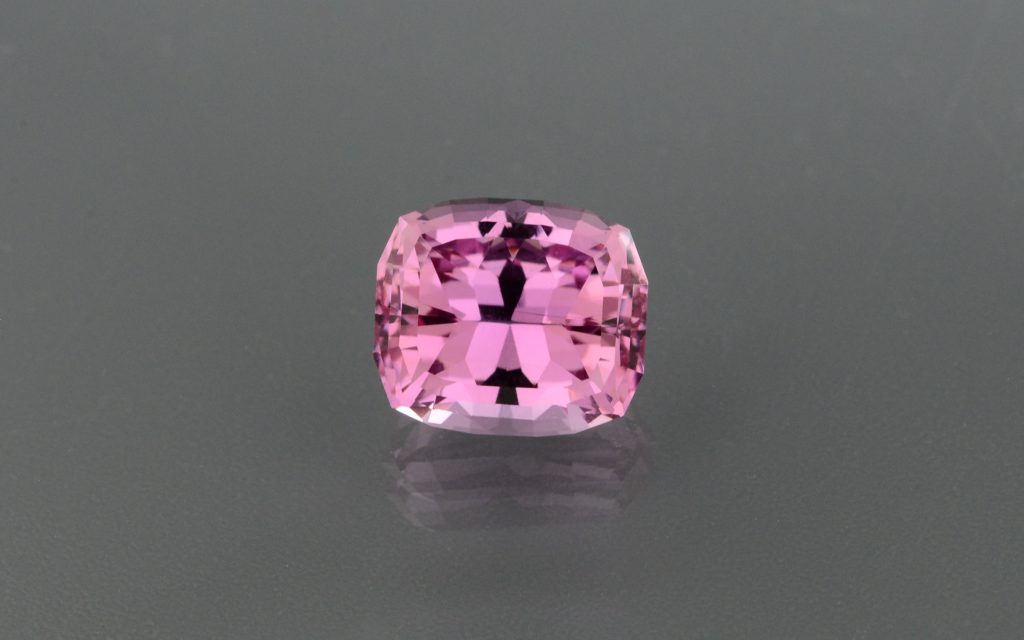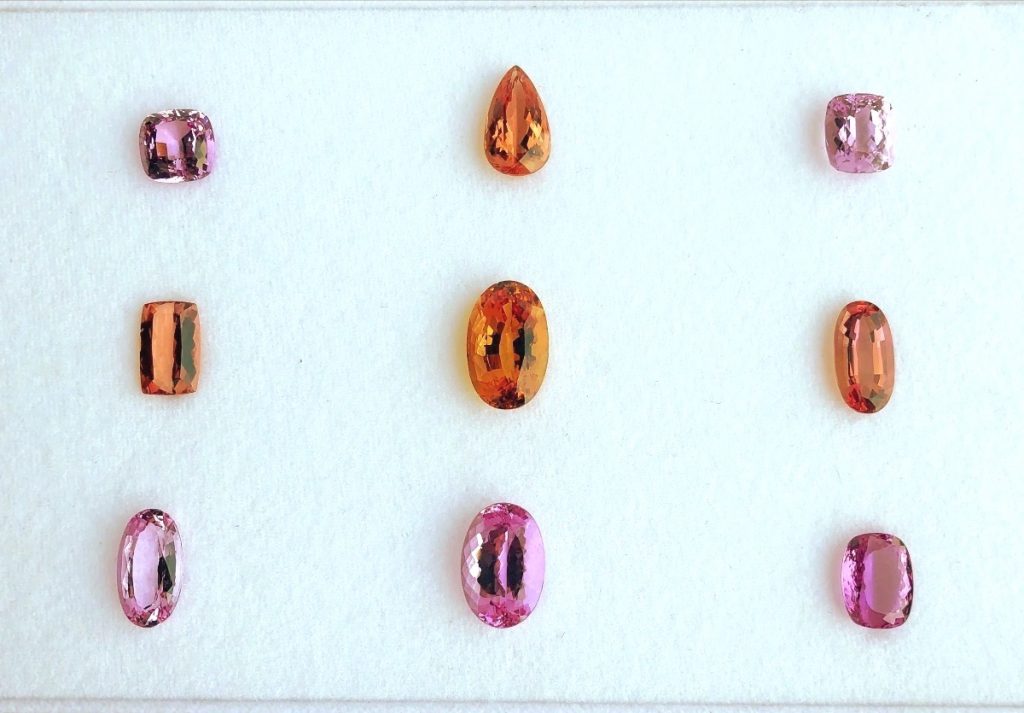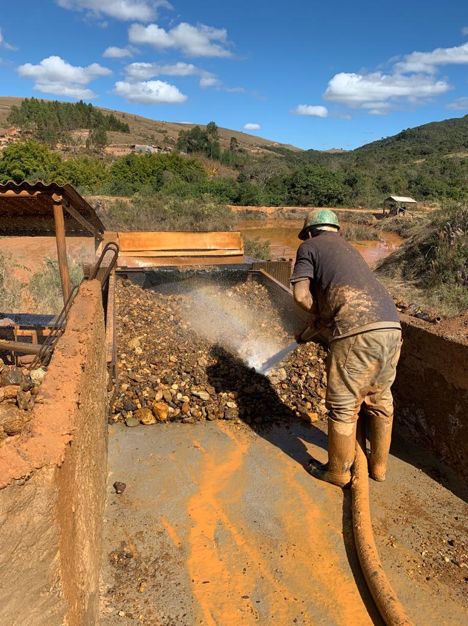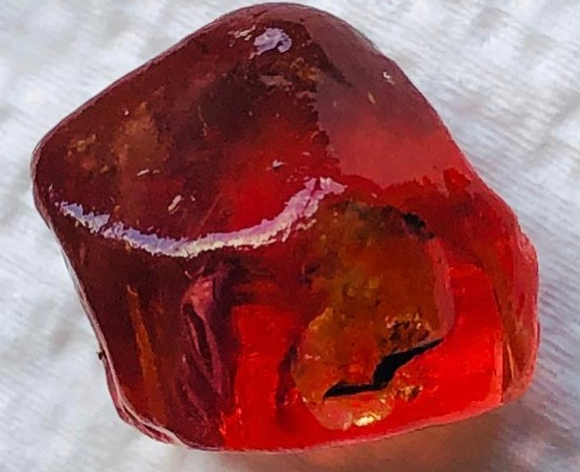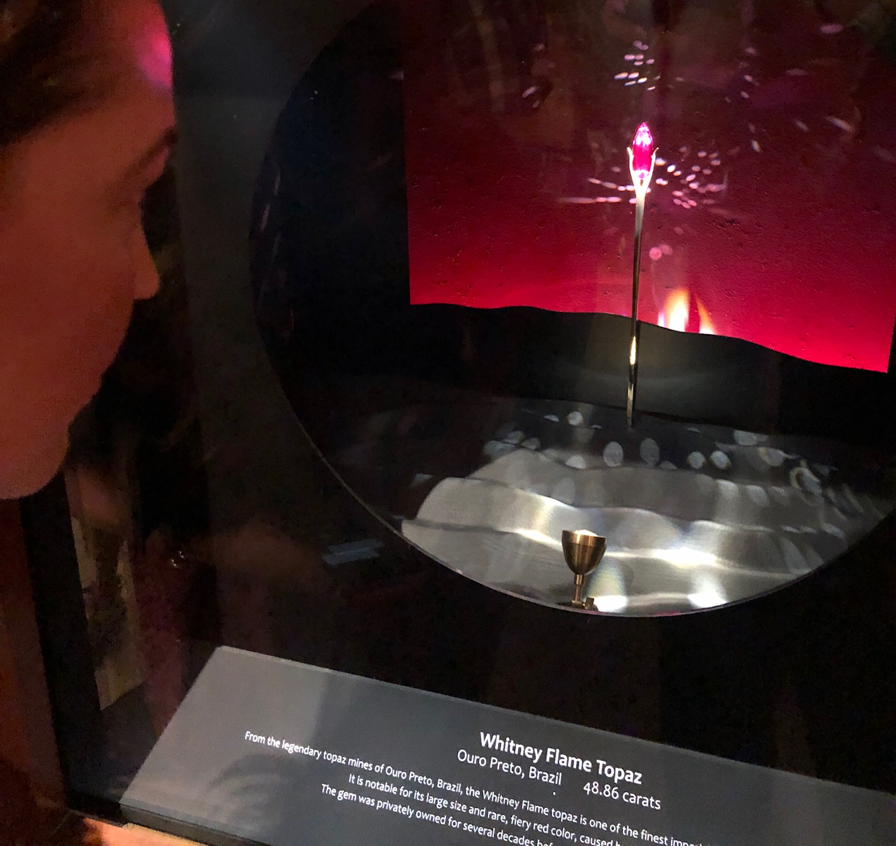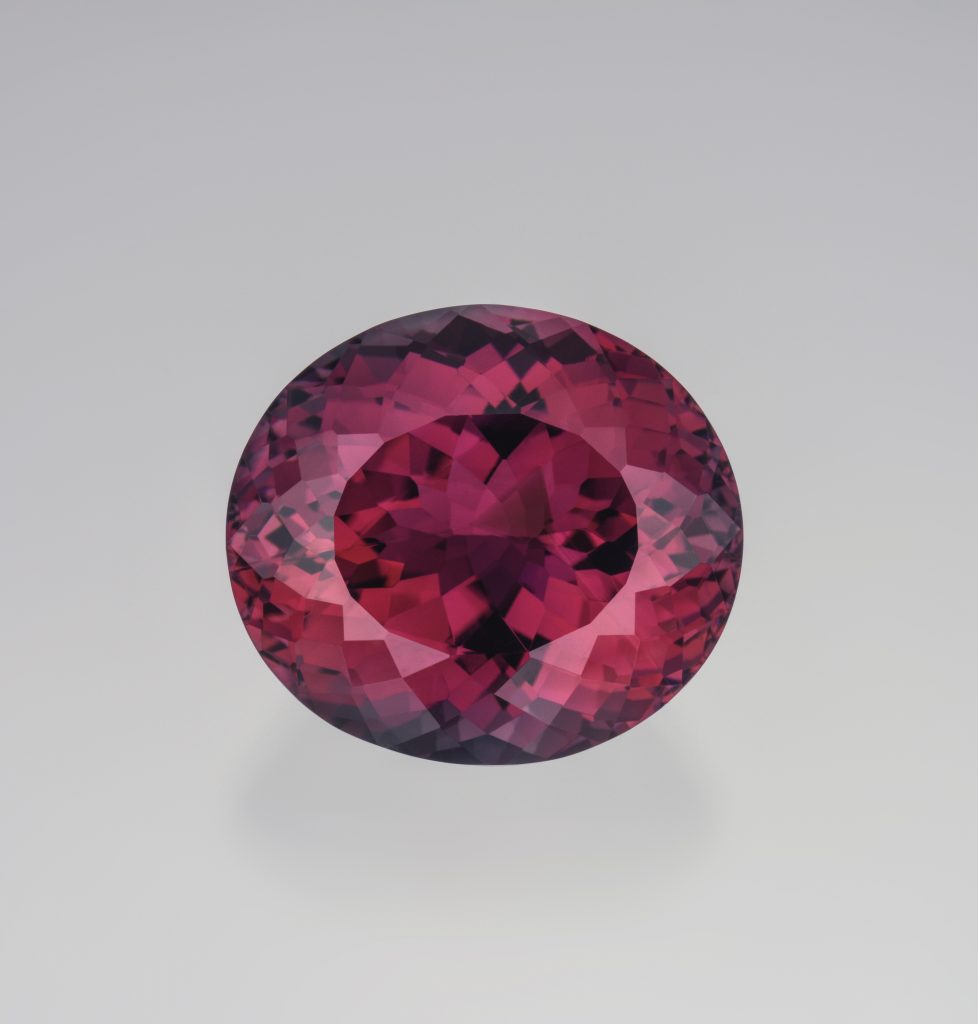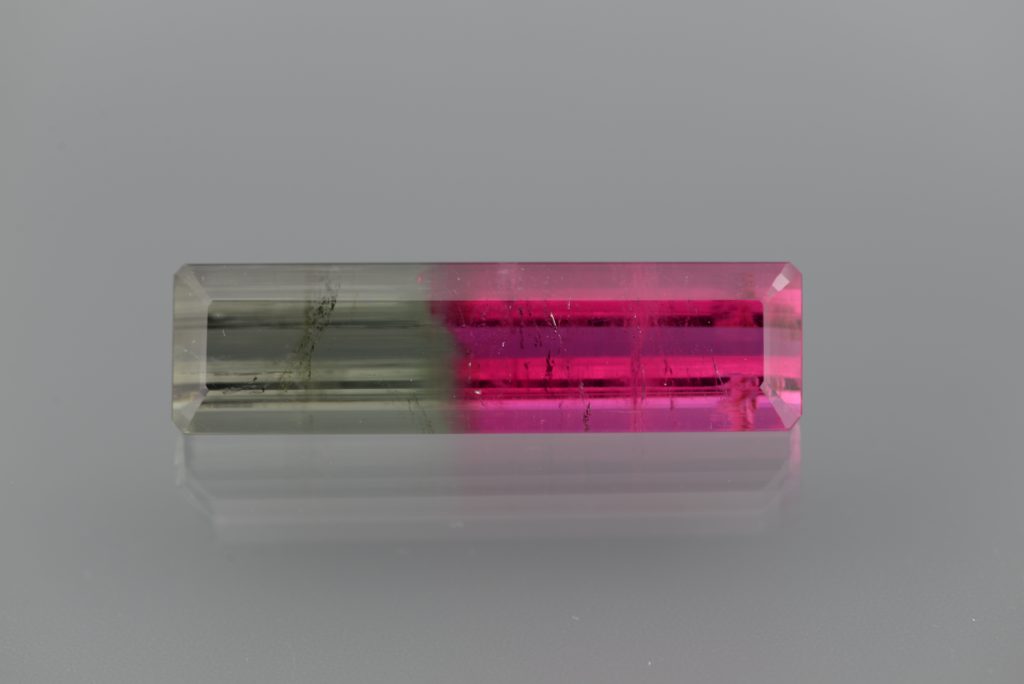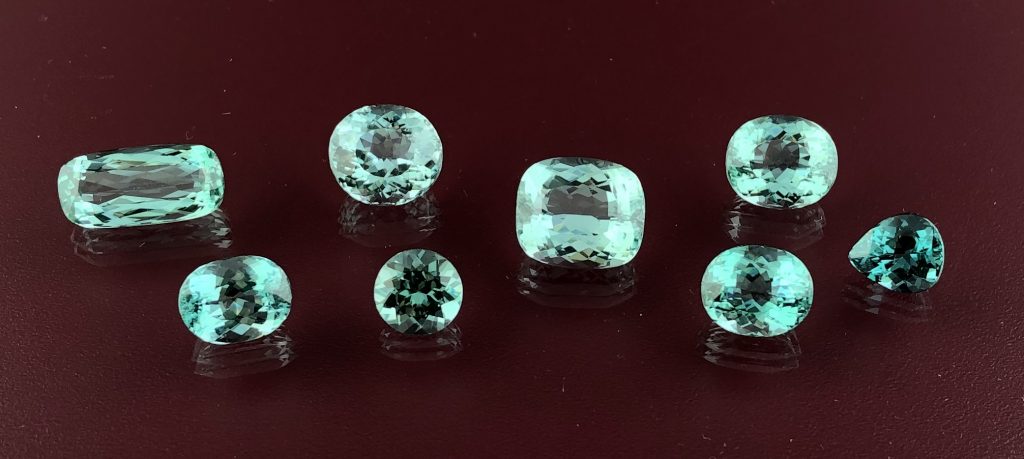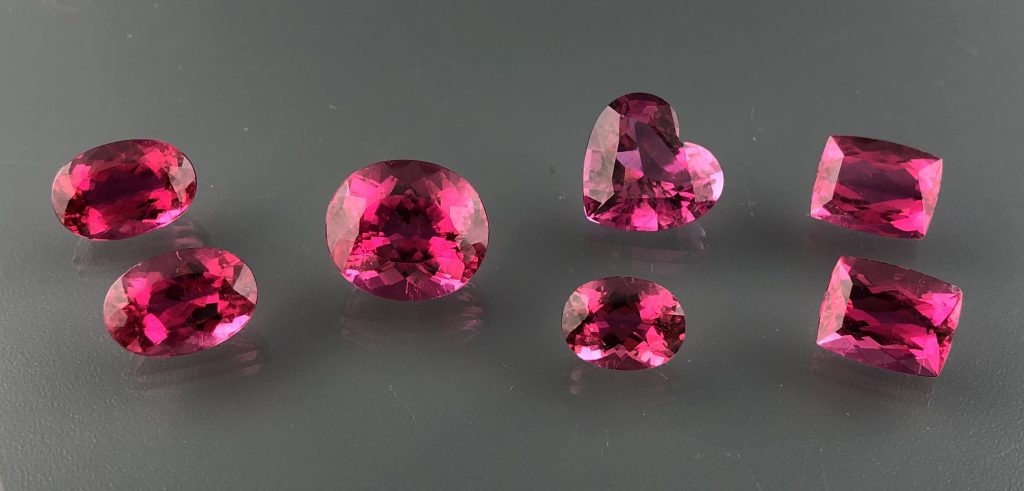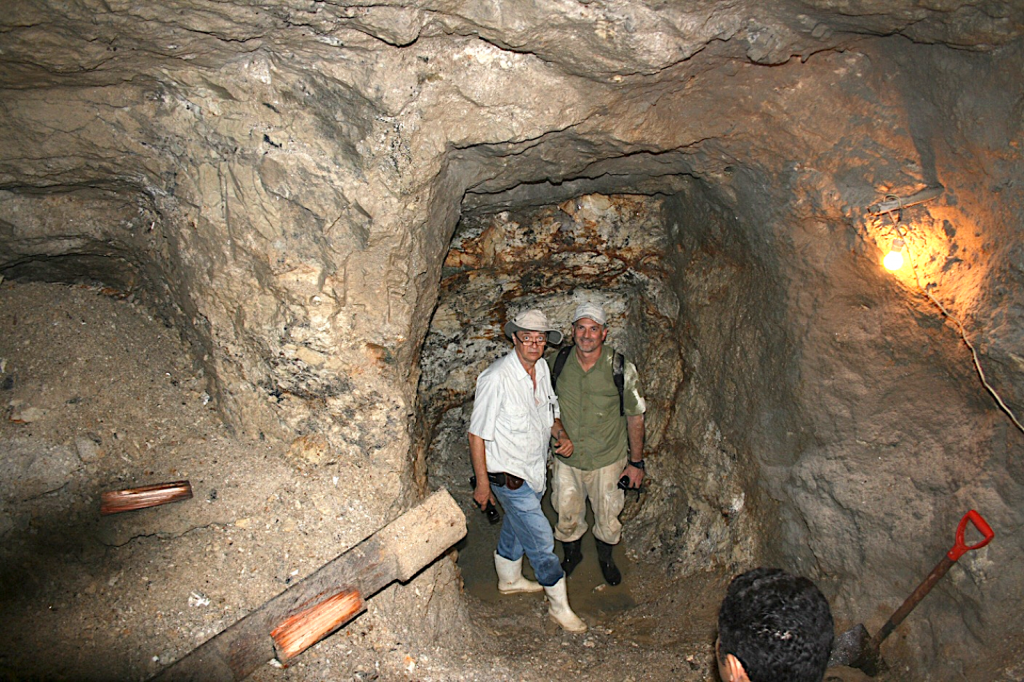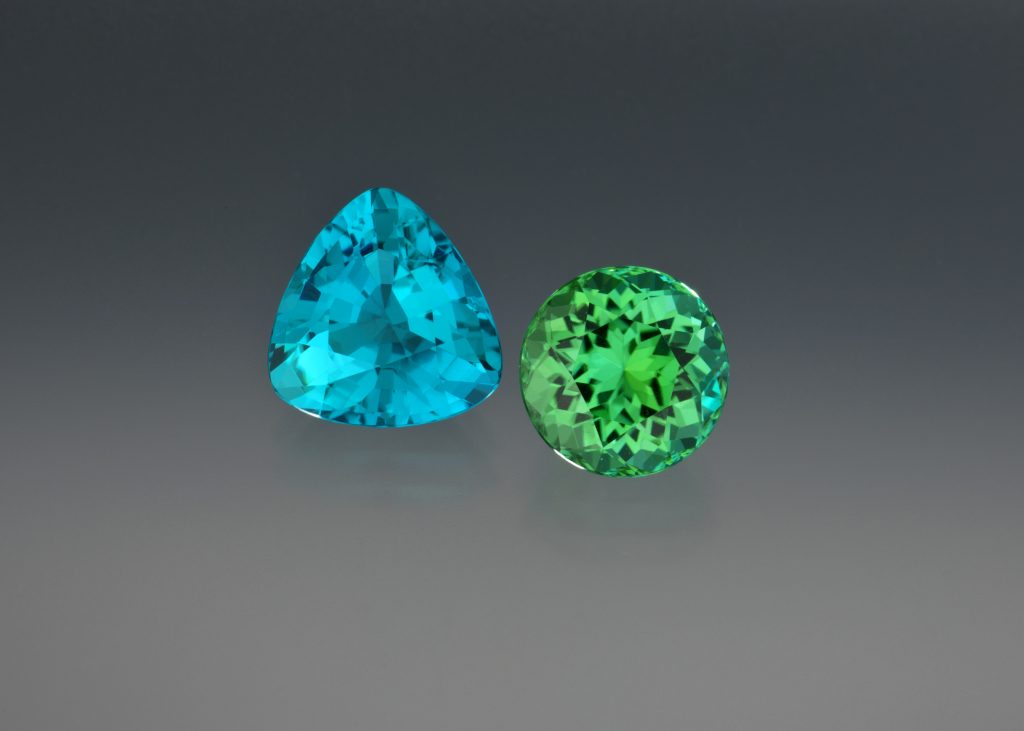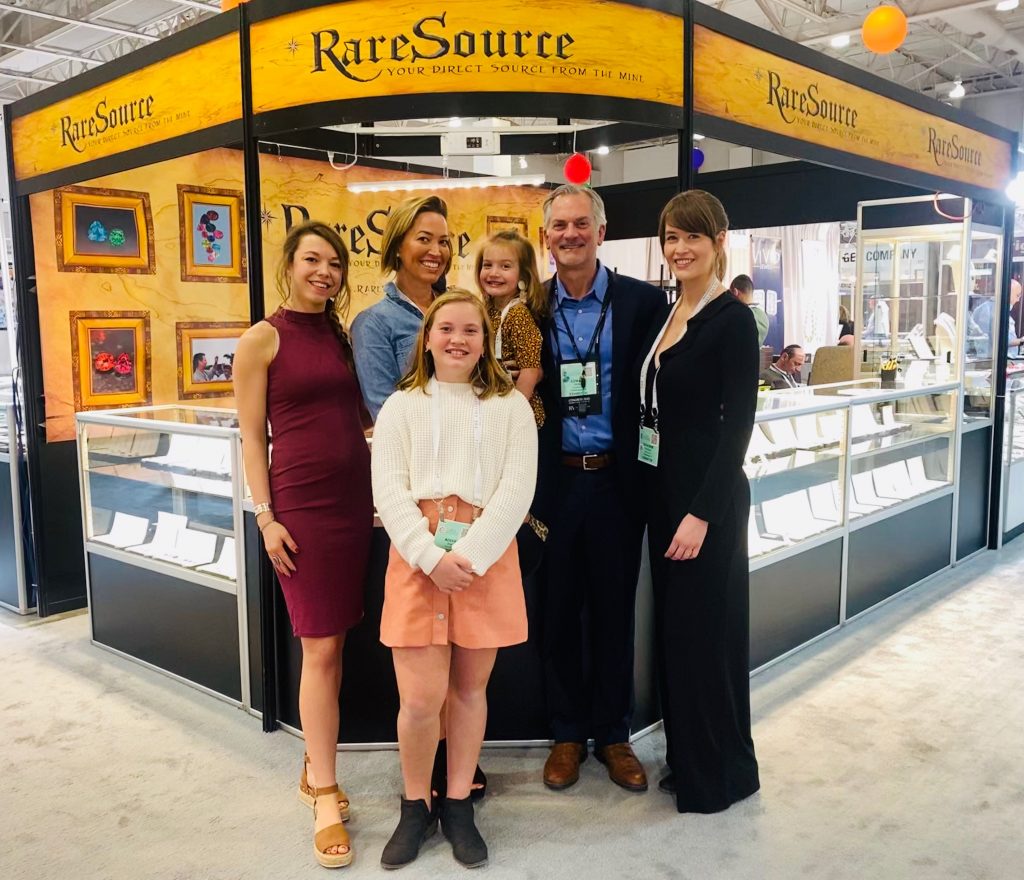
Photo by: Mark Mauthner
The name “garnet” is derived from the Latin “granatus”, referring to the resemblance garnet crystals share with pomegranate seeds
Garnet has a history of appreciation dating back thousands of years, from the time of the Egyptian pharaohs to the Greco-Roman period and through the Middle Ages. It was one of the most favored gems of religious, political and social leaders to signify status
The garnet group of gems is made up of the end-members pyrope, almandite, spessartite, grossular and andradite
Deep red Bohemian pyrope garnets, discovered in the early 16th century, helped increase availability of garnet for the middle class, and thus made it a more mainstream gem until the late 1800’s
Fun Fact: the word “pyrope” stems from the Greek words meaning “fire eye”
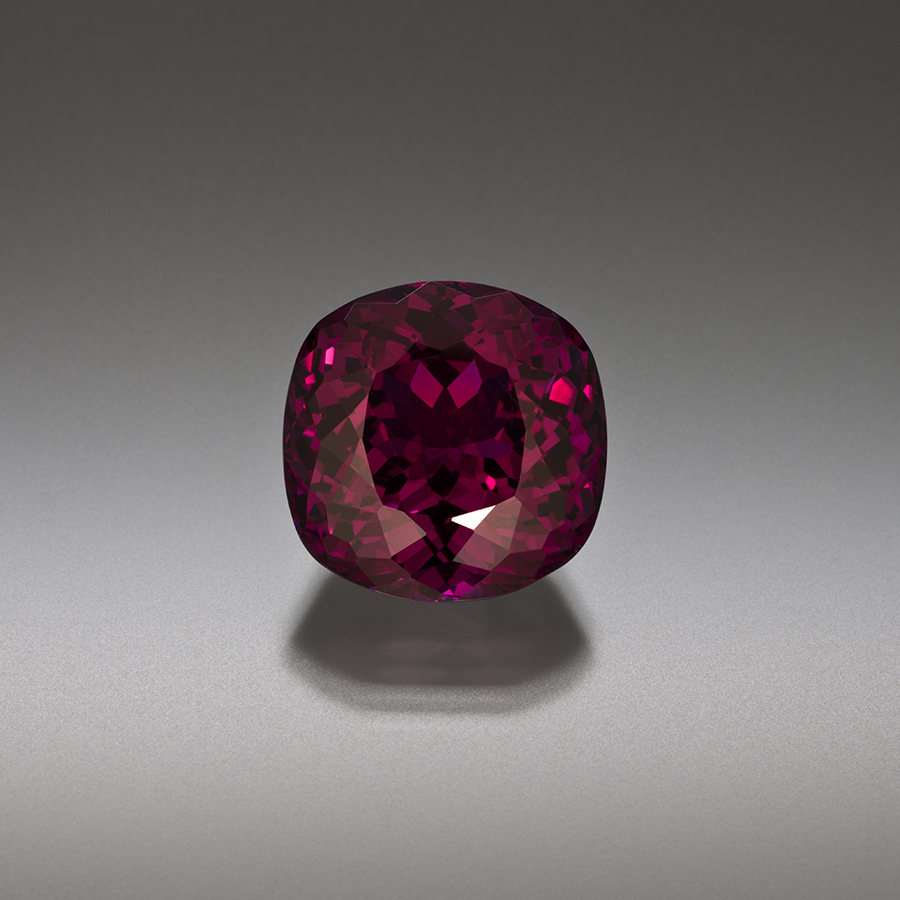
Photo by: Robert Weldon
Rhodolite garnets are a pyrope-almandine mixture that range in color from purple to purplish-red. This 40.66ct purple rhodolite from Tanga, Tanzania, is an extremely large example of this material
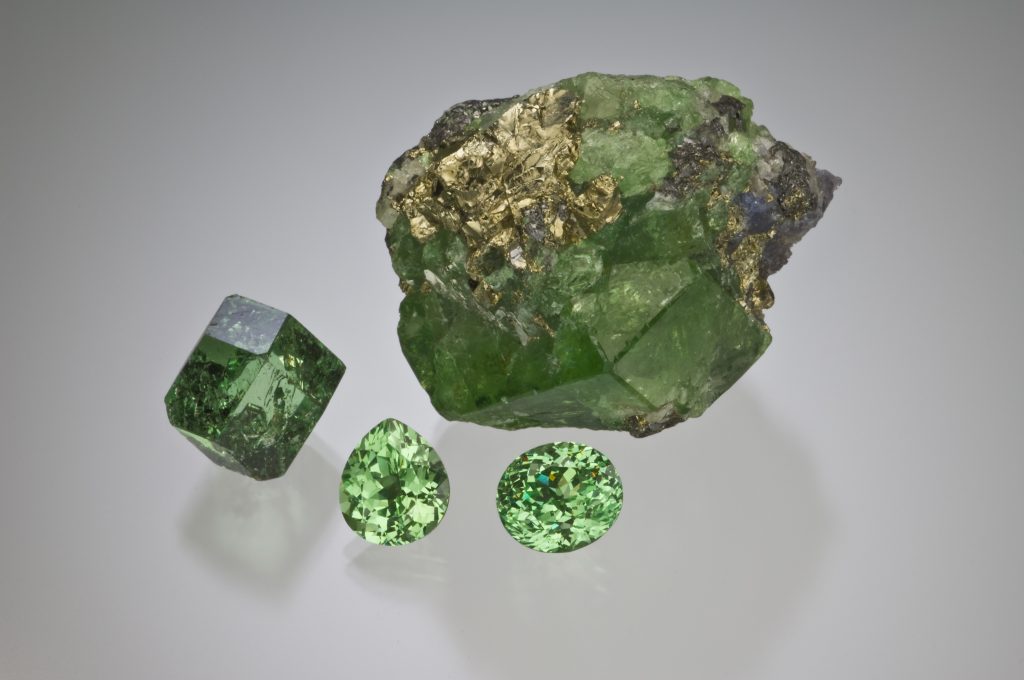
Photo by: Jeff Scovil
Garnet has a high to very high refractive index range, from pyrope and grossular at approx ~1.74 to rhodolite at ~1.76 to spessartite at ~1.80 and andradite at ~1.88. Gemologists use refractive index, specific gravity, absorption spectra and inclusions to differentiate garnet’s end-members and varieties
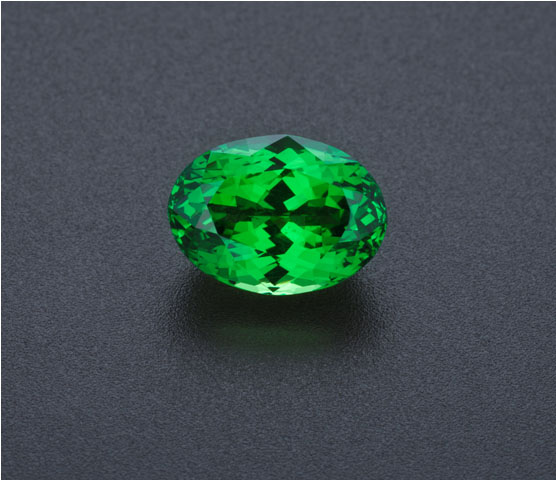
Photo by: Robert Weldon
Tsavorite is the rich green variety of grossular garnet discovered by Campbell Bridges in 1967 in Tanzania, and again 3 years later in Kenya
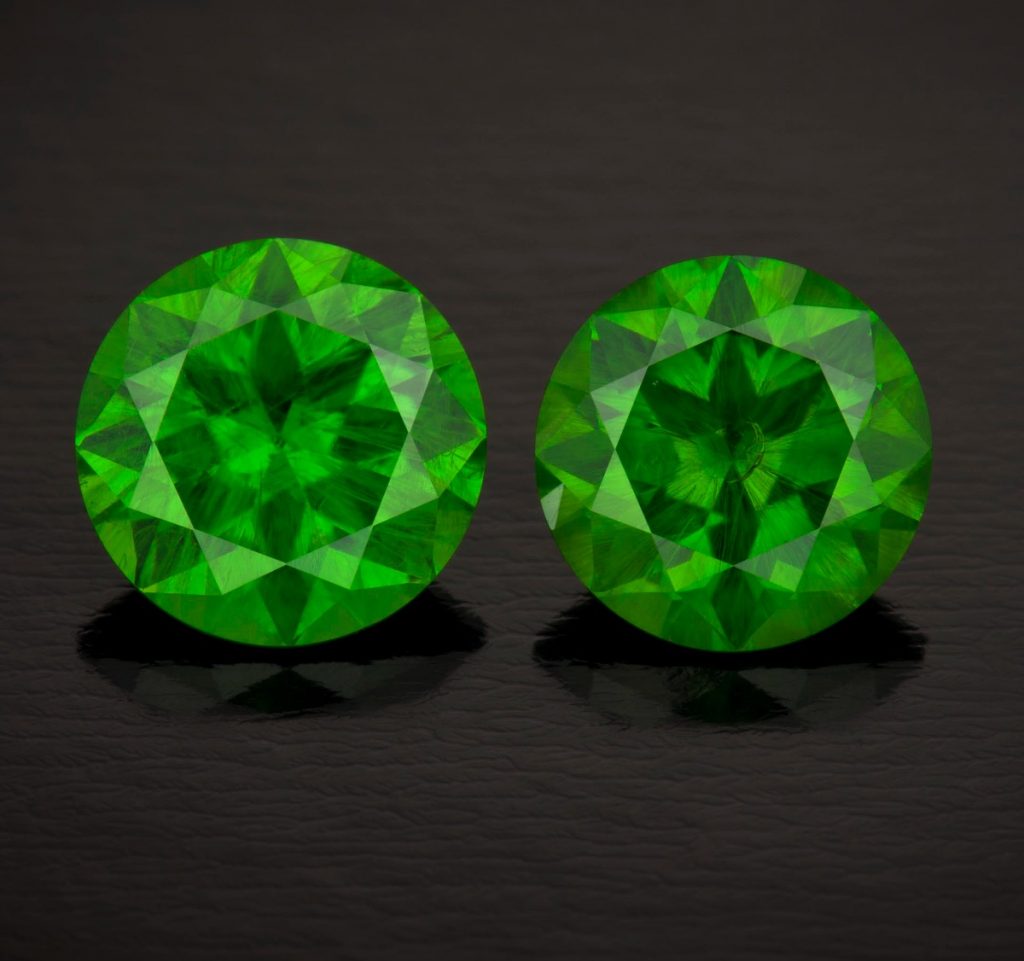
Photo by: Robert Weldon
Andradite garnets range in color from brown to the vivid green of highly sought after Russian demantoids. The cause of this vivid green color is due to trace amounts of chromium, while iron gives it a more yellowish appearance. The discovery of Russian demantoid garnet in 1854 added an exciting new color variety to the garnet family, which designers eagerly embraced. The initial source was quickly depleted but left a lasting mark on the industry that allowed for its resurgence when material reentered the market after the Cold War. Today, commercial quantities of demantoid are available from Russia, Namibia and Madagascar
Fun Fact: Andradite’s dispersion is 0.057, which is higher than that of a diamond at 0.044
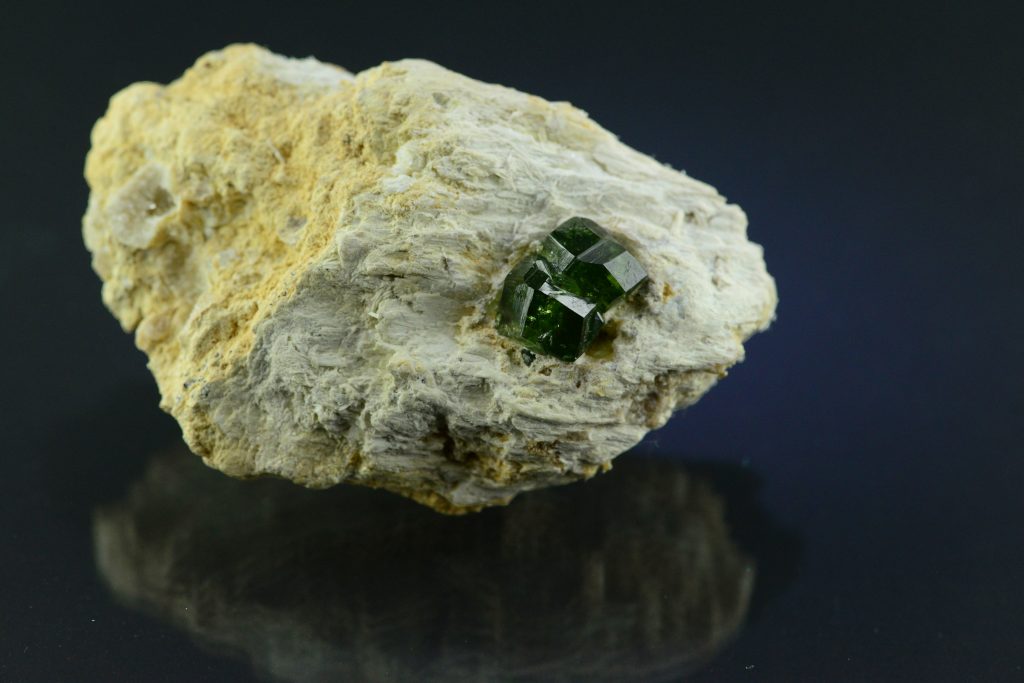
Photo by: Jeff Scovil
Garnets typically form under metamorphic or metasomatic conditions in which preexisting igneous or sedimentary rocks are altered by heat and pressure due to tectonic forces or contact with an igneous intrusion
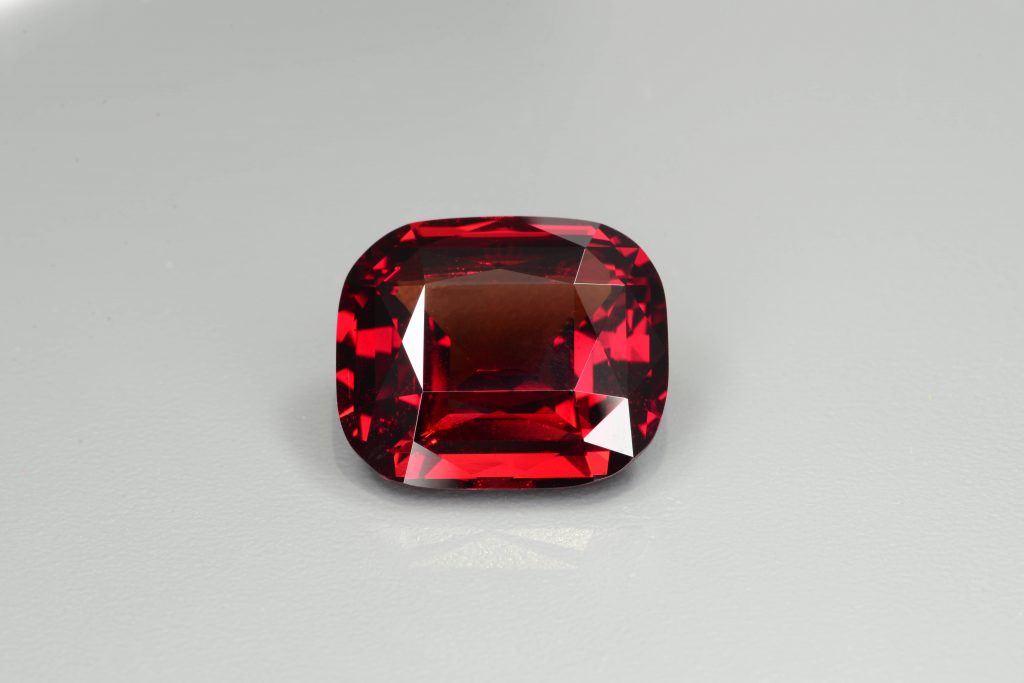
32.09ct Red Spessartite 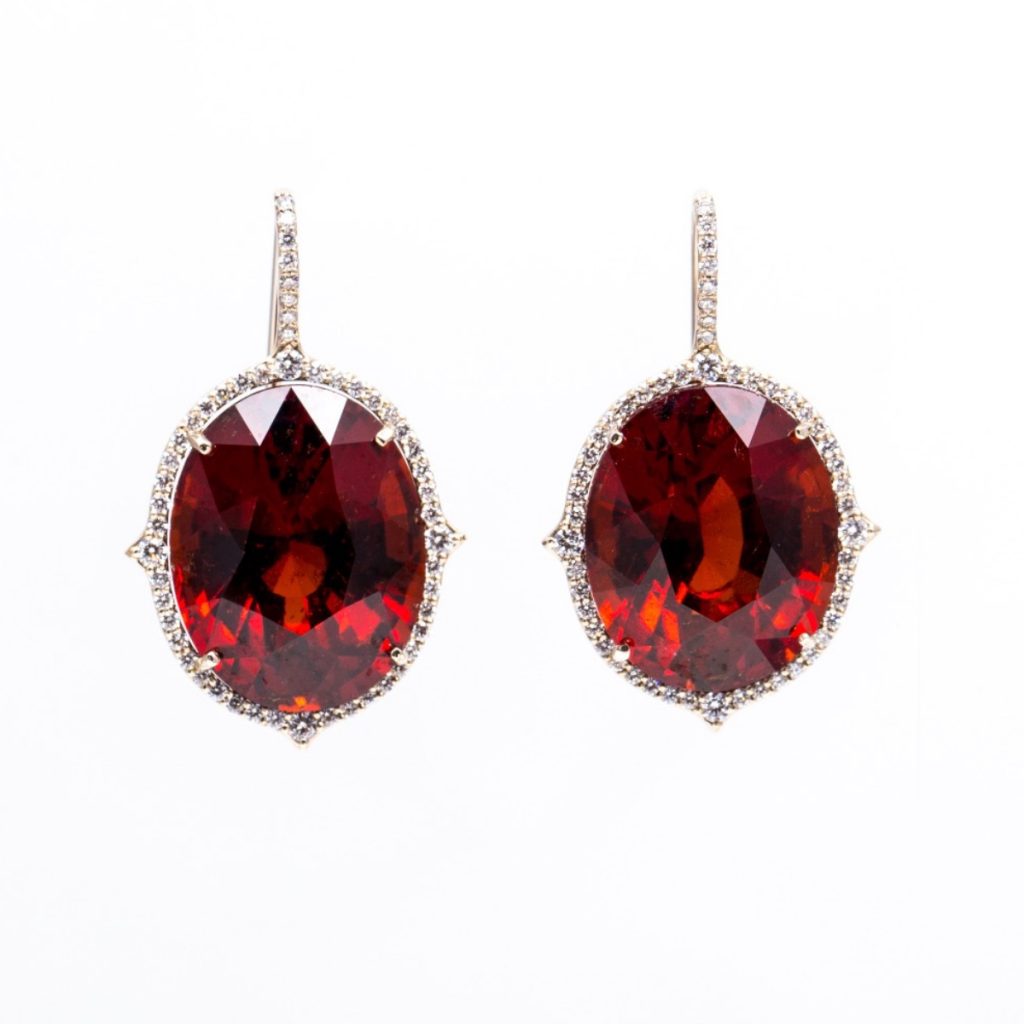
2=30.87ct Red Hessonite Earrings Earrings by: Carley Jewels
Red hessonites (above right), a variety of grossular, enjoyed increased production in recent years from Southern Sri Lanka, providing a more affordable alternative to red spessartite
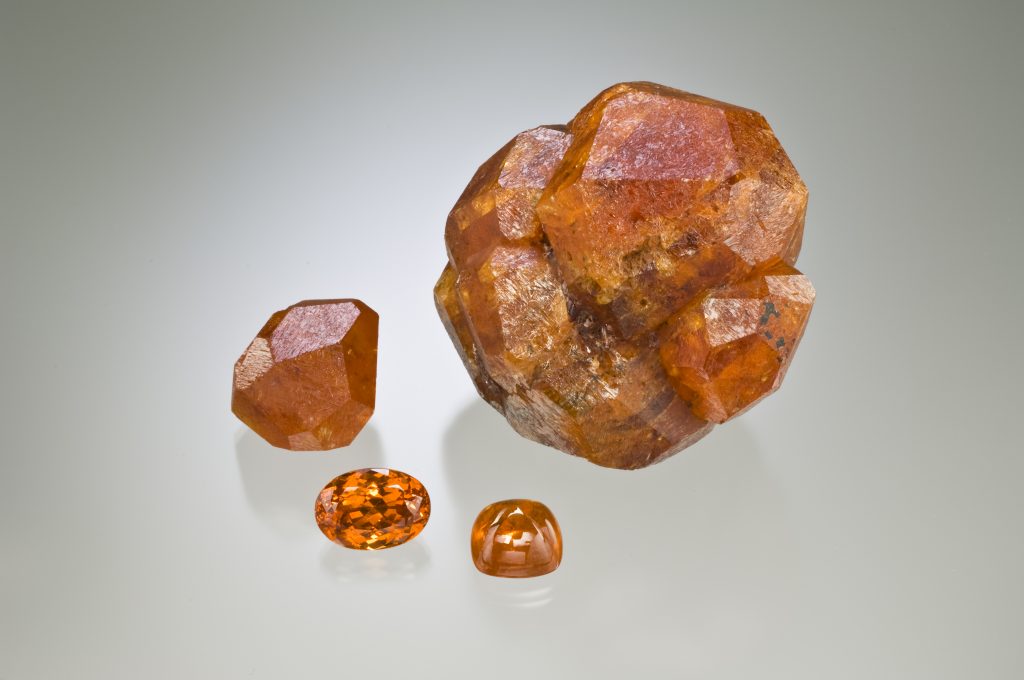
Photo by: Jeff Scovil
Gem quality spessartite crystals are found within metamorphosed schists. These crystals occur as euhedral or subhedral rhombic dodecahedrons (24 faces) which can sometimes look almost spherical
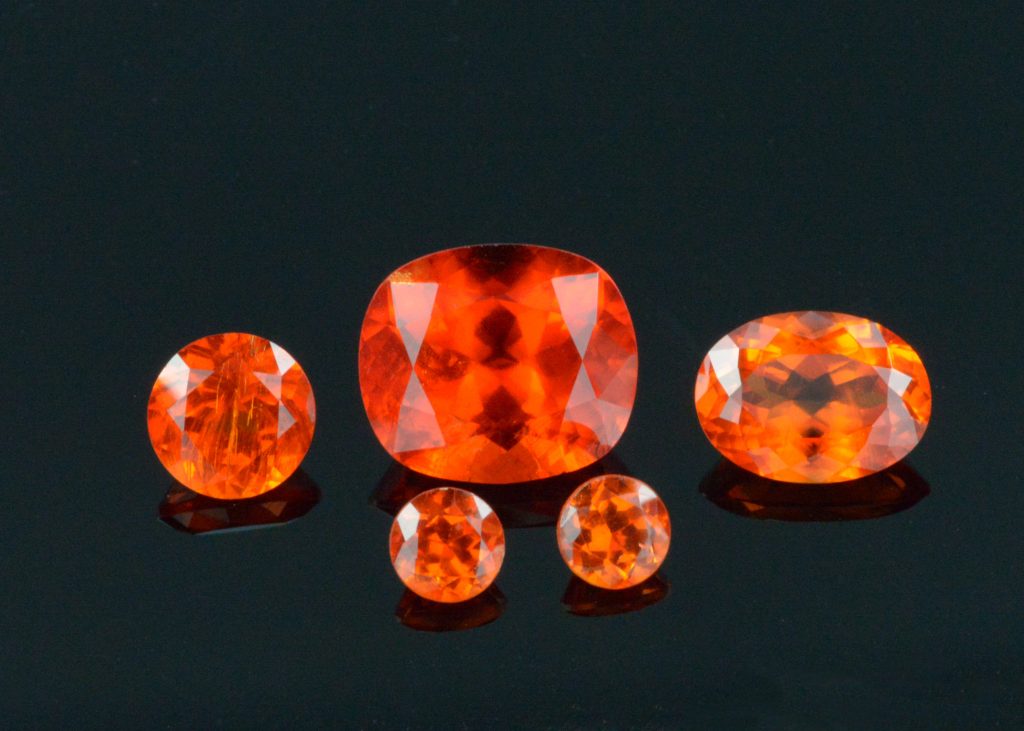
These vivid orange spessartites are extremely rare, usually occurring in sizes less than one carat. They were discovered by a farmer in 1992 along the Namibian border with Angola. The cause of this remarkable color is Manganese
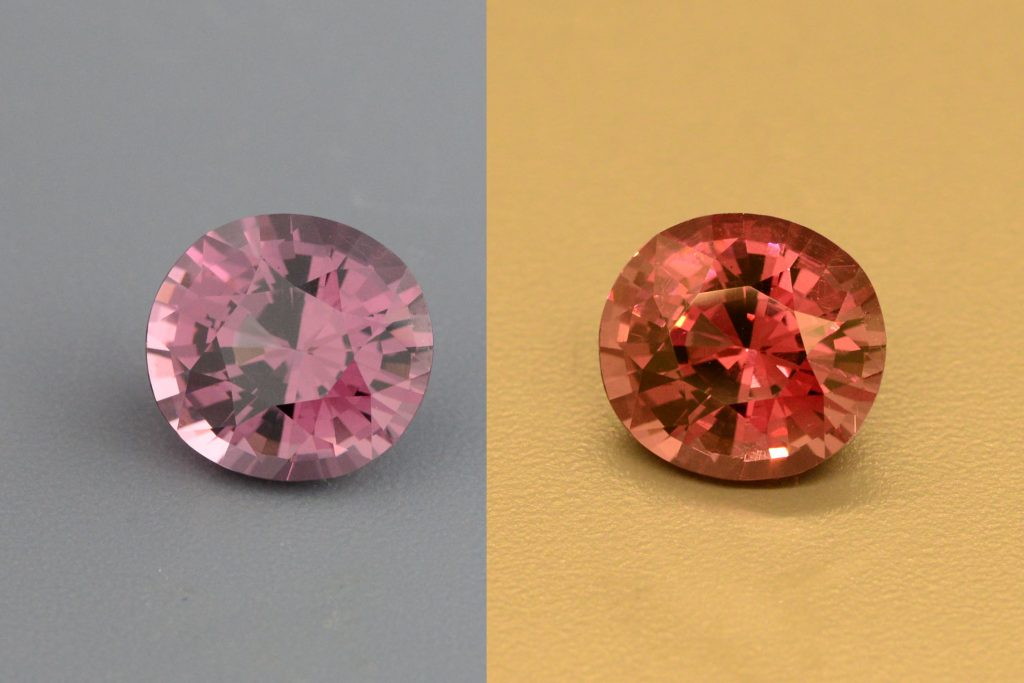
Malaia garnets are a pyrope-spessartine mixture that often exhibit a color shift or even a color change, like the gem above. Recent increase in supply from Tanzania and Madagascar has helped make this a popular garnet in contemporary jewelry design
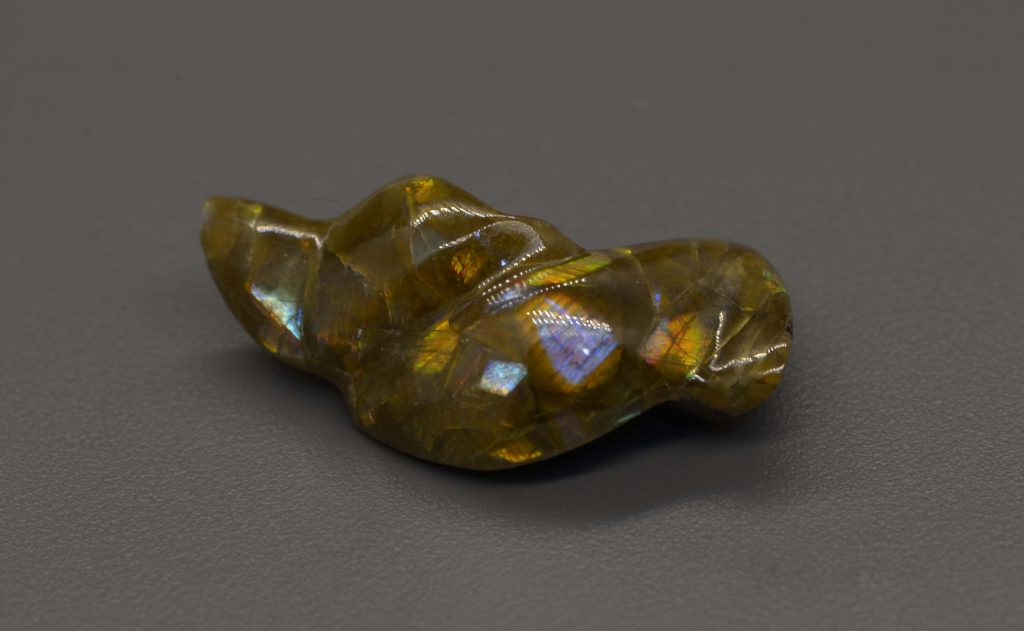
Rainbow garnet from Alamos Mexico, New Mexico and Japan exhibits a play of color due to an outer layer of growth that creates diffraction grating-like interference colors
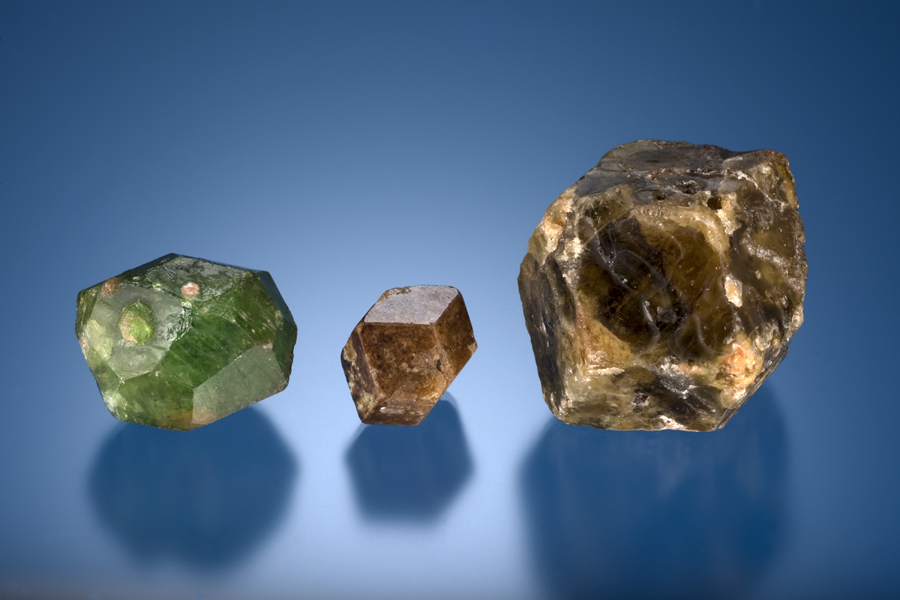
Grandite Garnet Rough 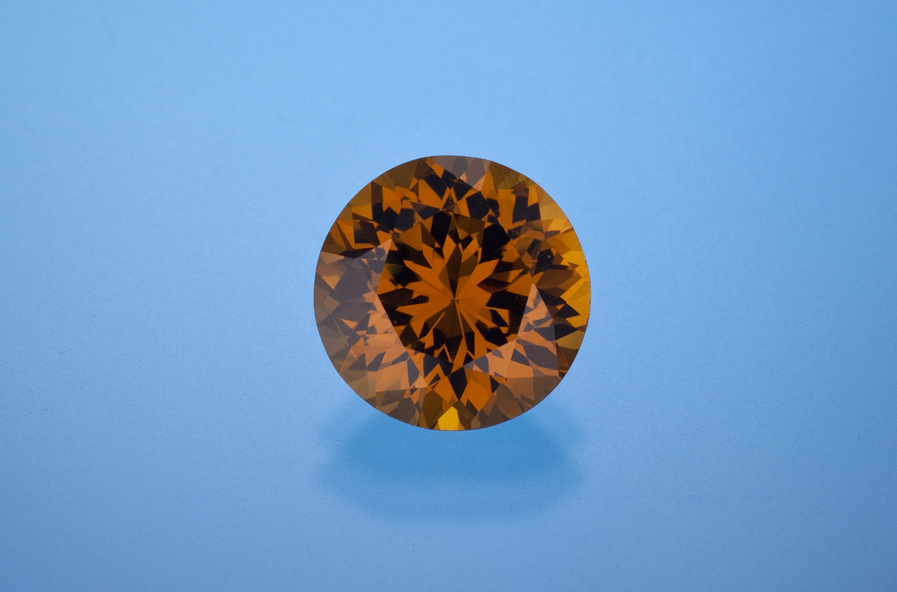
4.45ct Grandite Garnet
A new variety of garnet was discovered in Mali, West Africa, in 1994. Grossular-andradite, known in the trade as “Grandite Garnet” or “Mali Garnet”, has a chemical composition of (Ca,Fe)3Al2(Si04)3 and a refractive index range of 1.752 – 1.782. The color of most of the material ranges from yellowish-green to rich green to brown
Click below to see the Gems & Gemology, Fall 1995, article co-authored by Edward Boehm

